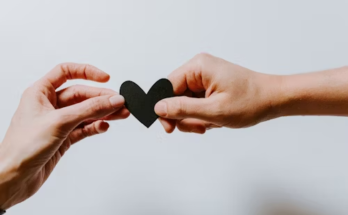
Decluttering can help you feel more in control. A minimalist challenge is an effective way to begin living a more mindful life.
If you can’t commit to decluttering for 30 days straight, try increasing the number of items you eliminate each day; you will be amazed at how quickly you can clear out your space!
Start with your wardrobe.
Organizing your wardrobe can be one of the most challenging and time-consuming tasks, particularly when trying to reduce clutter. Parting with items that remind us of certain times or have sentimental value may be difficult, but it will ultimately bring immense satisfaction when we have an orderly closet!
Decluttering begins with clothing. You may choose between starting with a clothing swap or going through all their closet items and donating anything that doesn’t fit or they no longer use, including any unnecessary trinkets and holiday decorations that don’t get used.
Focusing your decluttering challenge efforts on specific areas can be one of the best strategies for success, such as entryway drop zones, closets, and storage areas. For the best results, walk around your home and write down its top clutter spots so that during your 30-day challenge they can be addressed directly.
Try organizing your clothing into categories, such as shirts, pants, dresses, outerwear, and accessories. This helps you better see the amount you own while also helping identify any duplicate items you can donate or get rid of.
Minimalism doesn’t have to be associated with having nothing; its aim is simply living mindfully and owning what brings you happiness. You can achieve minimalism on any scale; for instance, making your bed every morning sets an excellent example and guides you towards a fulfilling and joyful life.
Get organized online.
A minimalist challenge can be an excellent way to regain order in your life and transition toward living an effortless minimalist lifestyle. By breaking up the challenge into manageable chunks and focusing on one area at a time, minimalism challenges offer relief for those struggling with new habits, plus their use of gamification has proven effective at increasing motivation for difficult or repetitive tasks.
Professional organizer Mary Ann suggests starting small spaces, such as your bathroom or desk drawers, to develop decluttering habits before undertaking larger areas of your home. Doing this will help you avoid “declutter regret” later and give you a sense of accomplishment as you complete this challenge. Furthermore, document your experience online (on social media pages, a blog, or a YouTube channel). Doing this will keep you accountable and motivated throughout this challenge.
Partner with friends or family to stay accountable and receive support during this challenge. Also, consider joining an online community of minimalists by searching for minimalism hashtags; these will keep you feeling connected and inspired! Don’t forget to take breaks during your challenge to prevent burnout while staying true to why the challenge matters to you so much!
Minimalism as a challenge is an excellent way to kick-start a healthier, more meaningful lifestyle. Though sometimes challenging, minimalism can actually be simpler than you imagine when combined with the appropriate mindset and tools.
Do a Clutter Walk
Clutter can be defined as anything that doesn’t add any tangible benefit to your life, including physical objects such as lawn equipment or old photos that don’t spark joy, as well as mental ones such as unread books or photographs that gather dust in your office or home office. Clutter is a source of distraction and stress; eliminating it can benefit both mental health and physical wellness.
Decluttering can seem overwhelming, but the key to successful decluttering is taking one space at a time. Start by identifying your top clutter hotspots and assigning each a grade between 1 (least cluttered) and 3, with 3 being the most cluttered. Next, work on clearing these spaces, room by room.
As you organize, it is advisable to sort items according to category for ease of storage and organization. For instance, store all your knick-knacks in boxes or trash bags; dispose of extra blankets that don’t belong on beds (remembering only two per bed); dispose of nonworking diffusers, empty candle jars, and other clutter items that take up space—these could all help your efforts in organizing more effectively!
Remember not to judge yourself harshly if emotional clutter becomes an issue for you; it is perfectly natural to hold onto certain objects for sentimental or practical reasons, or because you think you might need them someday. Reframe your thoughts around these objects by considering how much easier it would be to live with less clutter, and inviting guests over will become much more enjoyable when you have a clean home!
Take the no-spending challenge.
Minimalism entails removing unnecessary items from your life—both tangible possessions like clothing and furniture, as well as emotional drains like people who sap energy or cause dissatisfaction in others.
Minimalism can help you reduce spending! A great way to apply minimalism financially is to donate or repurpose items you no longer use rather than purchase new ones. A no-spend challenge may also provide an excellent opportunity to help out and give back while decluttering your home!
If minimalism is something you want to embrace in your life, setting clear parameters is essential. Any drastic changes should only be undertaken after careful consideration; otherwise, they risk falling off the wagon quickly. A strong reason should also exist behind your efforts, such as repaying debt or saving up for that dream vacation. Having compelling motivation will remind you why minimalism is such an impactful concept.
As soon as you can achieve minimalism in your life, its rewards will become clear. Minimalism can improve mental health by eliminating clutter, increasing productivity, and allowing you to focus on what matters in life. Furthermore, minimalism saves both money and time; for example, five minutes could be enough for cleaning up before guests arrived if done through minimalism! Don’t wait another moment; embrace minimalism today and experience its amazing benefits for yourself!
Set some goals.
Many minimalists believe that living a life free from unnecessary clutter is easier, saving time, energy, and money as a result. Yet minimalistism goes beyond simply owning less; it also entails releasing unfulfilling commitments, relationships, or desires. Finally, minimalism offers us the chance to reframe our relationships with the world, helping us see it not as something to overcome but as something worth living with!
As part of your decluttering challenge, set goals. One effective method of doing so is to create a checklist and tick each task off as completed each day; this allows you to stay on track and ensures no essential areas are overlooked!
Minimalism challenges aim to free your life of unnecessary clutter, both physical and psychological. Leo Babauta of the Zen Habits blog suggests taking a gradual, targeted approach: “Become the curator of your own life; gradually trim away things until only those that add real value remain.”
You can use minimalism to make your home more comfortable and organized, without it having to resemble the stark white and sparse homes you see in magazines and videos. According to Chayka, true minimalism involves more than simply buying the appropriate items or discarding unnecessary ones; rather, it should challenge our deepest beliefs to engage with life’s miracle. Minimalism is ultimately a form of spirituality designed to break down barriers while increasing awareness of your surroundings.



